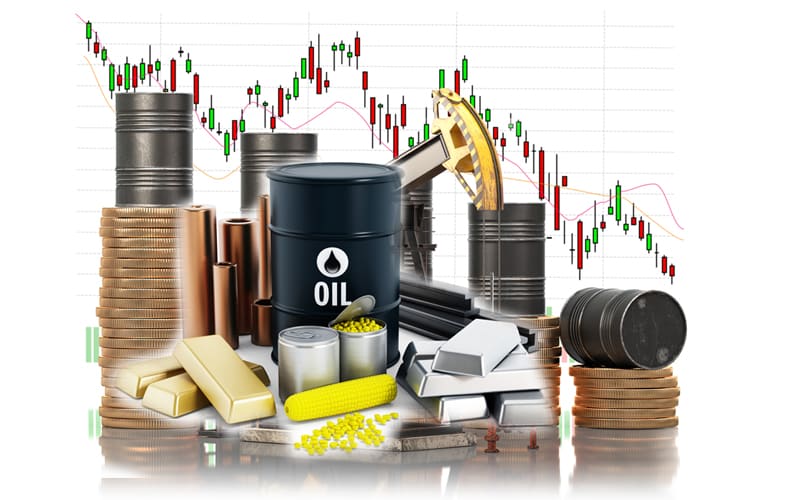After an exceptional year for markets in which the post-pandemic rebound and several supply concerns raised prices, commodity prices could decline in 2022. We now believe that supply and demand will be more balanced.
Commodities are on track to have their strongest annual performance in twenty years, fueled mostly by energy markets. Many commodities are seeing increased supply, and any economic downturn, whether caused by COVID or not, will put downward pressure on pricing. A stronger US currency and tighter monetary policy should also contribute.
When is the best time to buy commodities?
In recent years, purchasing commodities as a long-term investment has grown significantly. Commodity exchange-traded funds (ETFs) have made this procedure considerably easier. Other investments, such as managed futures, can profit independent of the direction in which commodity prices move. Timing isn’t as critical when investing in commodities with a percentage of your investment portfolio as it is when actively trading commodities.
The two most prevalent periods when investors rush to commodities are when they become extremely cheap and when commodities are viewed as a value play. Another occasion is when commodities are at multi-year highs and investors want to get in on the action. In truth, following a period of great returns, most asset classes attract the most investment funds. This is a reasonable idea in some cases, but investors frequently purchase at the top of the market.
Commodity traders don’t necessarily need prices to move higher to make money. Commodity traders may simply get in and out of the market by trading futures contracts, as well as profit from commodities moving lower. Such speculators often employ a specific trading technique in order to profit from short-term price fluctuations.
Precious metals
In the second half of 2021, precious metal prices dropped, owing to weak physical demand and the deteriorating market mood. Outflows from gold-backed exchange-traded funds (ETFs) and declining central bank purchases have weighed on gold prices, which have been somewhat more robust. Silver prices fell owing to sluggish autocatalyst demand, while platinum and palladium prices fell due to weak industrial demand.
Slowing economic growth, stricter monetary policy, and property sector troubles in China, according to Fitch Solutions, might pull metals down next year. Because the market balance for most metals is tight and stockpiles are at record lows, prices would be higher than pre-COVID levels.
After a predicted 44.1 percent increase this year, the FSCRIR Industrial Metals index is expected to decrease by 10.8% in 2022. However, the Omicron variety and monetary policy perspectives create a lot of uncertainty.
Raw materials
Cotton prices soared to a 10-year high in October 2021, owing to a brightening outlook for global demand. This season, which ends in July 2022, global cotton demand is predicted to reach 36 mmt, up 1% from 2020-21 and close to the 30-year average rise of 1.2 percent. On the supply side, the worldwide output is expected to rise by 6.4 percent, with Brazil (16 percent) and the United States leading the way (27 percent). In 2022, cotton prices are predicted to rise by 5%.
Natural rubber prices are held in check by low demand. Natural rubber prices fell to $1.74/kg in November 2021, after hitting approximately $2.40/kg in March 2021. Prices have remained stable due to weakening worldwide demand caused by lower-than-expected car sales connected to the semiconductor shortage. In terms of supply, worldwide output rose by 5.8% from January to October 2021 compared to the same period the previous year. The majority of suppliers saw a rise. Weaker-than-anticipated demand and rebounding supply are predicted to continue to put downward pressure on prices, which are forecast to drop 10% by 2022.
Oil
Oil prices have been steadily rising, owing to increasing worldwide demand in the aftermath of the epidemic, weather-related shortages, and supply restrictions imposed by OPEC. Furthermore, the natural gas scarcity has raised the oil demand, driving up oil prices even further. Crude prices are expected to average $74 per barrel in 2022, then fall to $65 in 2023 as global oil producers recover.
The relaxation of global lockdown measures, which freed up the economy, was the primary driver of rising oil consumption. China and Europe had the most demand. In addition, Hurricane Ida cut US output, while OPEC lowered production due to maintenance and supply interruptions in numerous member nations.
Oil demand is predicted to increase in 2022, especially during the winter, as people switch from oil to natural gas for heating. However, a wider Omicron spread might put downward pressure on increasing oil prices.
Energy commodities
Natural gas, gasoline (petrol), and coal are all energy commodities. In 2021, natural gas and coal prices skyrocketed. Demand for natural gas and coal has gradually increased as global economies recover from the effects of the epidemic, both for power production and industrial usage. Drought has also curtailed hydroelectric power output in several nations, notably the United States, with rising demand for these fossil fuels. In China and Indonesia, flooding has also decreased coal output.
China slapped a restriction on coal shipments from Australia, causing international trade to be interrupted. This resulted in a large rise in China’s natural gas imports. On the other hand, the Chinese government modified coal output, causing prices to fall somewhat in November.
As climatic conditions continue to produce worldwide shortages, prices for these fossil fuels are likely to stay high in 2022. Winter will put higher pressure on coal and natural gas prices if it turns out to be colder than typical.
Conclusion
Investors buy commodities when they are at their lowest price and when they are viewed as a value play. Some commodities to consider buying in 2022 include raw materials, i.e., cotton, natural rubber, precious metals, I.e., gold, silver, platinum and palladium, oil, and energy commodities, I.e., natural gas, gasoline (petrol), and coal.



